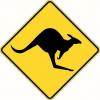Hi there,
I'm a beginner with hand planes and I wanted to get myself an older jack plane. I ended up buying a Stanley #5 jack plane that I got off eBay. It appears to be a Type 12 (based on the markings on the main casting) and one of the attractions was that it came with a 0.95" aftermarket Lie-Nielsen blade.
The seller listed it as being in working condition but I can't get it working well. I think I have diagnosed three problems but don't know how to fix them.
Problem 1: the yoke on the depth adjuster isn't properly engaging the chipbreaker. I think that may be because the replacement blade is a little thicker than stock, but the tip of the yoke also seems a little worn down. Am I right that the only solution is to replace this? And if so, can someone point me to the place to get what I need?
Problem 2: This one has me stumped. Even though the frog moves freely and the face of the frog is pretty flat, I can't position the frog in a way that (1) has the blade lying flat on the mating surface and (2) leaves a decent gap between the blade and the front of the mouth of the plane. If I back the frog out enough to open the mouth to 1/16-1/8", the front of the blade rests on the back of the plane mouth, NOT on the frog. And if I advance the frog enough to solve that problem, there is barely any space between the blade and the front of the mouth. The only solution I can see is to file open up BACK of the plane mouth at least 1/16. But for a plane sold as being usable, this seems like a very aggressive solution. What am I missing?
Problem 3: The little washer/disc on the lateral adjustment lever is missing. Am I right that I can live without this? If not, how do i fix it?
Thanks in advance!
Blade 1.jpgAdjuster 1.jpgchipbreaker 2.jpgChipbreaker.jpgFrog 1.jpgFrog 2.jpgMouth open.jpg





 Reply With Quote
Reply With Quote



